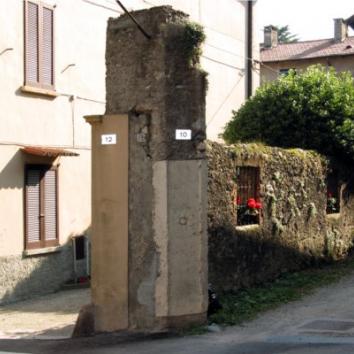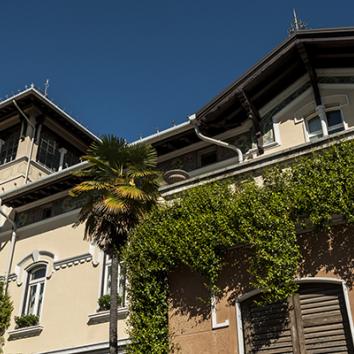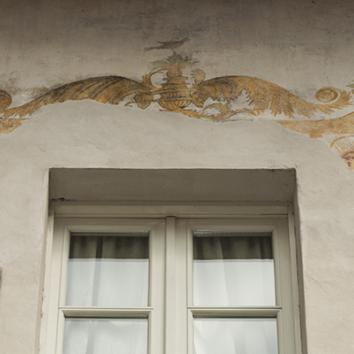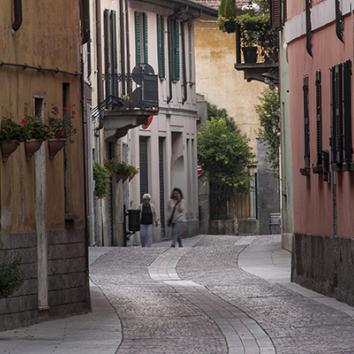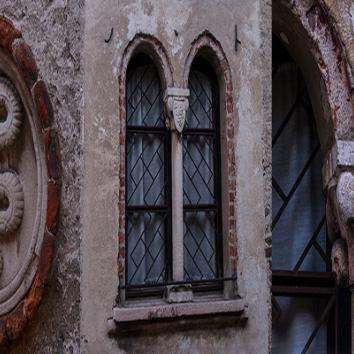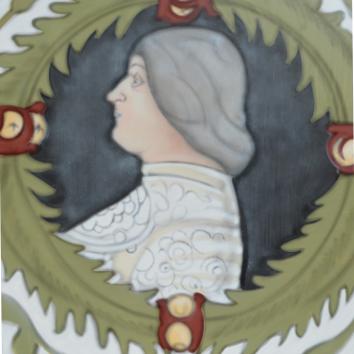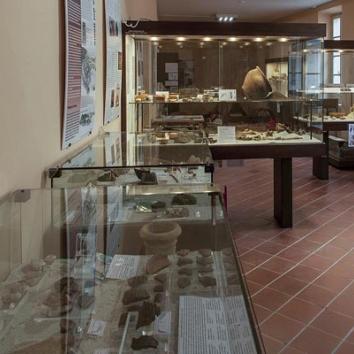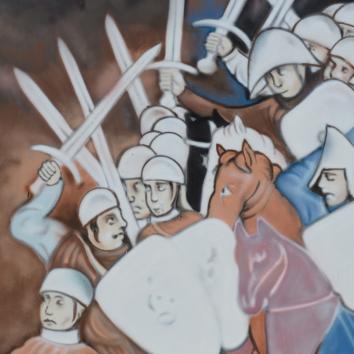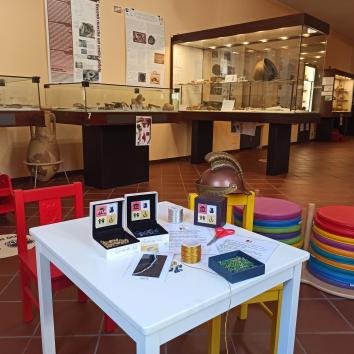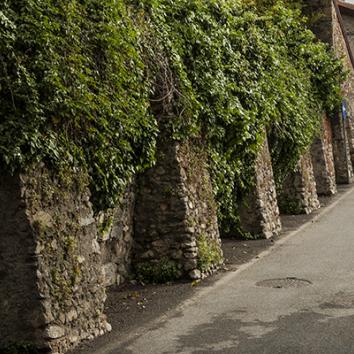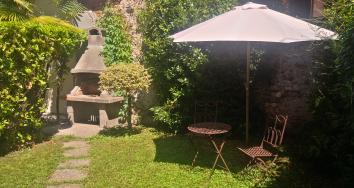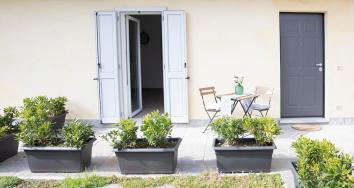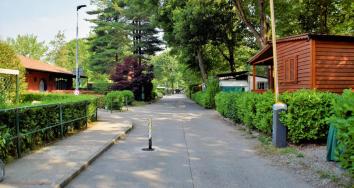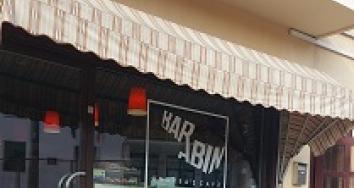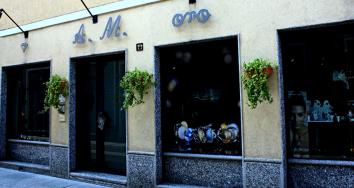La Scapiliata (by Andrea Ravo Mattoni)
Sito n.51 del Museo Diffuso
Head of young woman, known as La Scapiliata, from a work by Leonardo da Vinci, painted on occasion of the 500th anniversary of his death. Andrea Ravo Mattoni, 2019, spray paint on PVC canvas, 1.5 x 1 m. The work chosen by the artist for this homage to Da Vinci is that known as the Scapiliata, a perhaps unfinished painting produced between 1492 and 1501 on a board of walnut wood, using white lead (lead carbonate), iron-based pigments and cinnabar, on a white lead background with copper-based pigments and lead-tin yellow; it is kept in Parma National Gallery (Palazzo della Pilotta). The work was was recorded for the first time in a Gonzaga inventory dated 1627; we know very little about how it reached Parma or the identity of the woman it portrays. The original painting measures 24.7 x 21 cm and shows a female head tilted forwards and to the right; the face is three quarters on and occupies most of the available space; below, on the left there is a hint of the shoulder. The pleasant, youthful features suggest a nymph, Leda or the Madonna, similar to the Vergine delle Rocce. The downward-looking eyes are half shut, the lips are small but soft and almost hint at a smile. The forehead, cheekbones, nose and chin are highlighted in white, giving the face a three-dimensional aspect. The wavy brown hair has a central parting, and shows the grace, movement and life characteristic of Da Vinci's genius. The side locks are like small waterfalls blown by a light wind, which move in every direction, wavy streams that curl and twist. This feature above all suggests its association with a text by Leonardo da Vinci that seems to describe it exactly:
… make hair with locks that play together in unreal wind around youthful faces, with various revolutions that decorate them gracefully. And do not do as those who besmear them with glues, and make it seem and look as if they were glazed; increasing human madness, for which it is not enough that sailors bring gum arabic from the eastern parts, to ensure that the wind does not disturb the uniformity of these tresses ...

